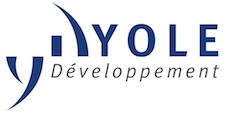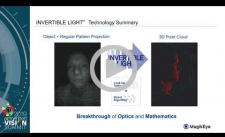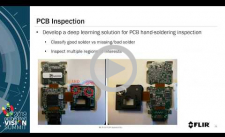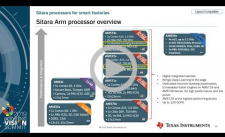| LETTER FROM THE EDITOR |
Dear Colleague,
On Wednesday, February 19 at 8 am PT, leading market analyst firm Yole Développement will deliver the free webinar “3D Imaging and Sensing: From Enhanced Photography to an Enabling Technology for AR and VR” in partnership with the Embedded Vision Alliance. In 2017, Apple brought an innovative use case to mobile devices: a structured light-based 3D sensing camera module that enables users to rapidly and reliably unlock their devices using only their faces. Android-based mobile device manufacturers have added front depth sensors to their products in response, and are now also adding rear-mounted depth sensors. So far, at least, the applications of these rear-mounted depth sensors are predominantly photography-related. In the near future, however, they’re expected to further expand into augmented reality, virtual reality and other applications. In this webinar, Yole Développement will describe the application roadmap, market value and cost of those highly anticipated mobile 3D sensing modules, including topics such as CMOS image sensors, optical elements and VCSEL illumination. For more information and to register, please see the event page. Registration for the 2020 Embedded Vision Summit, the preeminent conference on practical visual AI and computer vision, is now open. Be sure to register today with promo code SUPEREARLYBIRD20 to receive your Super Early Bird Discount! Also, sponsoring or exhibiting at the Summit is an amazing opportunity to engage with a uniquely qualified audience. Your company can be an integral part of the only global event dedicated to enabling product creators to harness computer vision and visual AI for practical applications! For more information, see the Summit Sponsors and Exhibitors page or email [email protected]. The Embedded Vision Alliance is also now accepting applications for the fifth annual Vision Tank start-up competition. Are you an early-stage start-up company developing a new product or service incorporating or enabling computer vision or visual AI? Do you want to raise awareness of your company and products with vision industry experts, investors and customers? The Vision Tank start-up competition offers early-stage companies the opportunity to present their new products or product ideas to more than 1,400 influencers and product creators at the 2020 Embedded Vision Summit. For more information and to enter, please see the program page. Brian Dipert |
| DEPTH SENSING |
|
The Embedded Vision Alliance’s most recently completed Computer Vision Developer Survey reveals rapid growth in the use of depth sensing in commercial systems and applications. Check out the following presentations, along with the above-mentioned upcoming webinar, for expert insights and recent innovations in depth sensing. How to Choose a 3D Vision Sensor Depth Sensing Technique Enables Simpler, More Flexible 3D Solutions |
| MANUFACTURING APPLICATIONS |
|
Deep Learning for Manufacturing Inspection Applications Machine Learning at the Edge in Smart Factories |
| UPCOMING INDUSTRY EVENTS |
|
Yole Développement Webinar – 3D Imaging and Sensing: From Enhanced Photography to an Enabling Technology for AR and VR: February 19, 2020, 8:00 am PT Embedded Vision Summit: May 18-21, 2020, Santa Clara, California |
| FEATURED NEWS |
|
MediaTek Announces Dimensity 800 5G Series Chipsets for New Premium 5G Smartphones AnyConnect and ASUS Bring Smarter Camera AI to the Edge New Low-power, High-performance TI Jacinto 7 Processors Enable Mass-market Adoption of Automotive ADAS and Gateway Technology SiFive and CEVA Partner to Bring Machine Learning Processors to Mainstream Markets Qualcomm Accelerates Autonomous Driving with New Platform – Qualcomm Snapdragon Ride |






